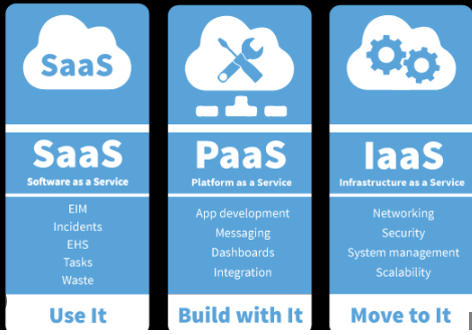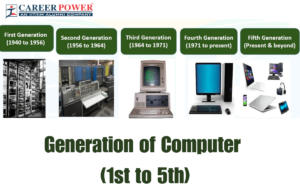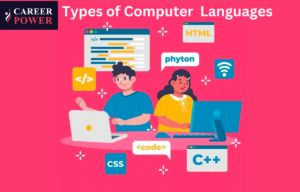Cloud Computing is one of the demanding technologies of the current time and it is also providing a new shape to the organization using it by providing them on-demand virtualized services or resources. Nowadays, cloud computing services are used by almost all organizations starting from small to medium and medium to large. These organizations are using cloud computing services for storing information and accessing it from anywhere and at any time with the help of the Internet. In this article, we have discussed the definition of Cloud Computing, its advantages, types, and more.
What is Cloud Computing
Cloud Computing is a general term referring to anything that involves the delivery of hosted services over the Internet. The term “Cloud Computing” was derived from the symbol of a cloud, which is frequently utilized to symbolize the internet in diagrams and flowcharts. It is the on-demand availability of computing resources including storage and infrastructure over the internet. Cloud computing removes the need for people and businesses to personally manage physical resources, and they only pay for what they actually use. The main goal of cloud computing is to provide easy, scalable access to computing resources and IT services irrespective of their nature public or private.
Characteristics and Advantages of Cloud Computing:
Depending on the cloud services selected by the customers and comparing them to the traditional on-premises IT, here are some of the features of cloud computing that it helps us to do:
- Lower IT costs: The costs and effort of purchasing, installing, configuring, and managing your own on-premises infrastructure are eliminated by the cloud.
- Improve agility and time-to-value: The organization can start using enterprise applications in minutes, instead of waiting for weeks or months for IT to respond to a request, purchase and configure supporting hardware, and install software with the help of Cloud. It also empowers certain users, specifically developers and data scientists to help themselves to support infrastructure.
- Scale more easily and cost-effectively: With the help of elasticity provided by a cloud, you can scale capacity up and down in response to spikes and dips in traffic instead of purchasing excess capacity that sits unused during slow periods. You can also take spread your applications closer to users around the world by leveraging your cloud provider’s global network.
- Workload resilience: To ensure resilient storage and to let the important workload of the users running across multiple global regions, the CSPs often implement redundant resources.
- Broad network access. Users can access their cloud data or even upload more data to the cloud from anywhere with a device having an internet connection to be used.
Types of Cloud Computing
Now that we know about cloud computing, let us know about the Cloud Computing Models. There are three types of Cloud Computing models namely Public Cloud, Private Cloud, and Hybrid Cloud.
- Private Cloud: A Private Cloud is a proprietary network or a data centre that is eligible to supply hosted services to a limited number of people, with certain access and permissions settings. Private Cloud services are usually delivered to internal users from a business’s data center. It helps an organization build and maintain its own underlying cloud infrastructure. This model offers the versatility and convenience of the cloud while preserving the management, control and security common to local data centers. Some examples of Private Cloud technologies include VMware and OpenStack.
- Public Cloud: A Public Cloud can sell services to anyone over the Internet. In this model, the cloud service is delivered over the internet via a third-party cloud service provider (CSP). These services are sold on demand, typically by the minute or hour, though long-term commitments are available for many services. The payment is to be done only for the central processing unit cycles, storage, or bandwidth they consume. Some of the leading public CSPs include AWS, Microsoft Azure, IBM and Google Cloud Platform (GCP), as well as IBM, Oracle and Tencent.
- Hybrid Cloud: These clouds are a combination of Public and Private Clouds and allow the companies to take advantage of the public cloud services and maintain the security and compliance capabilities commonly found in private cloud architectures. Hybrid Cloud Models aim to create a unified, automated, scalable environment that leverages all that a public cloud infrastructure can provide, while still maintaining control over mission-critical data. Companies can use the private cloud to run mission-critical workloads or sensitive applications while the public cloud can be used to handle workload bursts or spikes in demand.
- Multi Cloud: When two or more clouds are used from two or more different cloud providers, it is termed as Multi Cloud. Having a Multi Cloud environment can be as simple as using email SaaS from one vendor and image editing SaaS from another. But when enterprises talk about Multi cloud, they’re typically talking about using multiple cloud services—including SaaS, PaaS, and IaaS services—from two or more of the leading public cloud providers. Hybrid Multi cloud is the use of two or more public clouds together with a private cloud environment.
Cloud Computing Services
The practice of using a network of remote servers hosted on the internet to store, manage and process data rather than saving it on a personal computer or local server is known as Cloud Computing. The companies that offer cloud computing services are known as Cloud Providers and the customers are required to pay for the cloud computing services based on their usage. The Cloud Computing Services are of 3 types and have been detailed below-
1) SaaS- Software as a Service (SaaS) is a way in which services and applications are delivered over the Internet. This service helps us to avoid complex hardware and software management as it can directly be accessed via the internet. It also saves us from the expenses of hardware as well as software maintenance by eliminating the need to install and run applications on our own computers or in the data centers. Most SaaS users need to pay a monthly or annual subscription fee whereas some also offer ‘pay-as-you-go’ pricing based on the actual usage. SaaS applications are also called Web-based software, on-demand software, or hosted software.
Characteristics of Saas:
- The users will have to pay only for what they use and this makes it cost effective.
- It saves the time spent in Installation and Configuration as it can be directly accessed from the web browser without the need of installing any software.
- The app data can be accessed from anywhere with the help of an internet connection.
- SaaS can be relied upon for automatic updates rather than purchasing new software.
- Users can easily access the services and features in demand.
2) Paas- Platform as a Service is a cloud computing category that provides a platform and environment for the developers to build applications and services over the internet. These services can be easily accessed via the web browser as they are hosted in the cloud. PaaS sets the users free from installing hardware and software to develop or run a new application as it hosts the hardware and software on its own infrastructure.
Characteristics of PaaS:
- Users can access the infrastructure and other IT services provided by PaaS from anywhere via a web browser.
- It eliminates the charges one may have for on-premises hardware and software and charges only for the services provided on a per-use basis.
- It supports the complete web application lifecycle including building, testing, deploying, managing, and updating.
- The overall development of the application can be more effective as it allows higher-level programming with reduced complexity.
3) IaaS- Infrastructure as a service (IaaS) is a service model that supports various operations by delivering computer infrastructure on an outsourced basis. It is a service where infrastructure is provided as outsourcing to enterprises such as networking equipment, devices, database, and web servers. IaaS is also known as Hardware as a Service (Haas) wherein customers need to pay on a per-user basis, typically by the hour, week, or month.
Characteristics of IaaS:
- IaaS typically eliminates capital expense and reduces ongoing costs as the customers are required to pay on a per-user basis, typically by the hour, week, or month.
- Using IaaS for running websites can be less expensive when compared to traditional web hosting.
- IaaS Cloud Provider tends to provide better security than your existing software.
- The IaaS Cloud Provider handles the underlying data center or the introduction of new releases of the development or underlying software.

Cloud Computing Architecture
Cloud Computing Services should provide transparency, scalability, security and intelligent monitoring constraints. Other important constraints are still being researched to come up with new features and strategies with a great capability of providing more advanced cloud solutions. Here, in this section, we will study the Cloud Computing Architecture which is an important part of Cloud Computing-
The Cloud Computing Architecture is divided into 2 parts-
- Front End
- Back End
1) Frontend : The client side of the cloud computing system is referred to as the front end of the cloud architecture. It consists of all the user interfaces and applications that are used by the client to access cloud computing services or resources. Example- Web Browser is used to access the cloud platform.
- Client Infrastructure is a part of the frontend component and contains the applications and user interfaces that are required to access the cloud platform.
- We can also say that it provides a Graphical User Interface (GUI) to interact with the cloud.
2. Backend : The cloud which is used by the service provider is referred to as the backend. Its main task is to manage the resources and provide security mechanisms as it contains the resources. It also includes huge storage, virtual applications, virtual machines, traffic control mechanisms, deployment models, etc.
- Application- The software or platform which the client accesses is termed as Application. It provides the service in backend based on the client requirement.
- Service- The cloud based services namely SaaS, PaaS and IaaS are referred to as Service. It manages the type of service user accesses.
- Runtime Cloud- Runtime Cloud is responsible for providing the execution and Runtime platform or environment to the Virtual machine.
- Storage- The flexible and scalable storage service and management of stored data is provided by the Storage in Backend.
- Infrastructure- The hardware and software components of cloud including servers, storage, network devices, virtualization software etc is known as Cloud Infrastructure.
- Management- Management is referred to the management of backend components like application, service, runtime cloud, storage, infrastructure, and other security mechanisms etc.
- Security- The implementation of different security mechanisms for secure cloud resources, systems, files, and infrastructure to end-users is known as Security in backend.
- Internet- Internet connection acts as the medium or between frontend and backend and establishes the interaction and communication between the both.
- Database- The database in the backend provides the database for storing structured data, such as SQL and NOSQL databases. Example of Databases services are Amazon RDS, Microsoft Azure SQL database and Google Cloud SQL.
- Networking- Networking infrastructure provided in the backend for application in the cloud, such as load balancing, DNS and virtual private networks is known as Networking.
- Analytics- Analytics in backend service provides analytics capabilities for data in the cloud, such as warehousing, business intelligence and machine learning.



 Generation of Computers 1st, 2nd, 3rd, 4...
Generation of Computers 1st, 2nd, 3rd, 4...
 Input Devices of Computer: Definition, F...
Input Devices of Computer: Definition, F...
 Computer Languages and it's Types
Computer Languages and it's Types













